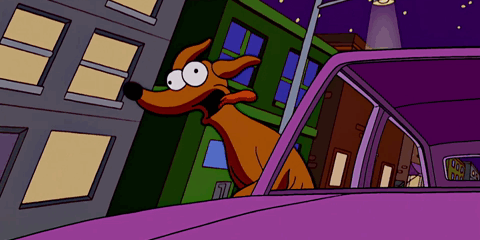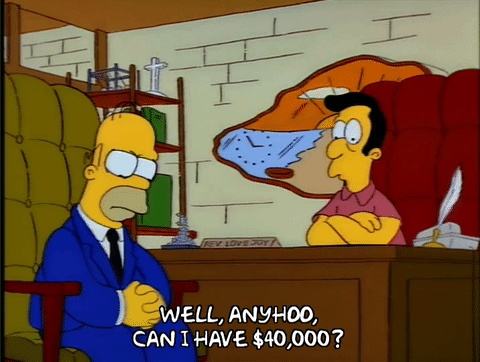
Featured Blog | This community-written post highlights the best of what the game industry has to offer. Read more like it on the Game Developer Blogs or learn how to Submit Your Own Blog Post
Why I lost $42,500 making a VR game
In the changing landscape of VR, indie devs burden a lot of risk while providing for innovation than many AAA companies. This is a burden that will lead to indie devs vanishing, and their innovation with them.

Why I lost $42,500 making a VR game
or—the big problem with the VR game industry.

Here we go again
The discussion about how much a VR game costs to develop, and how VR really isn’t that profitable for developers is a discussion running for nearly the past year. The VR landscape has changed greatly since the 2016 commercial launch, and thus, the VR Game landscape has changed to along with it. While I feel it is no secret that VR games aren’t really selling as well as their non-VR game counterparts, I do feel that there is no real scale as to how badly a VR game can do, and thus, how much it can cost a developer.
This is understandable, as I’ve said previously, many developers are bound to first or third party NDA’s and can not reveal financial info. Some follow the Steam developer agreement a bit more than it needs to (I will not be breaking that agreement here, Valve). Many devs just don’t want to talk about how much their development has lost (or made!) them out of fear of losing potential publisher deals, shame from developers (please don’t shame a developer for a flopped game) or just general harassment from the gaming community at large. In addition to that, not many talk about what they did right or wrong, which I feel is the biggest thing new developers can learn.
Luckily, I am the founder of my own company and am fully ok with talking about our latest release, Fruit for the Village, even in the face of all the things listed. I will talk about what we did right, and all the things we did wrong and do my best to do a financial breakdown of everything. If you read my last blog of a similar topic, this will be familiar to you… unfortunately.

A depiction of us, through this blog. I’m Santa’s Little Helper.
Before we begin
Some little house keeping notes and things to keep in mind.
First, Fruit for the Village is an incremental, “clicker style” narrative VR game. As the player, you are an unknown mysterious figure who is growing fruit to prevent a local village from starving. While you do this, you learn about the villagers, their daily life and most importantly, you (the players) role in the village. If you don’t know what an incremental game is, I would suggest trying out one of the genre’s most notable games, Cookie Clicker.
Secondly, Fruit for the Village was developed over, roughly, a year long period. I did about 95% of the work again, as this was a personal project spawned from a Clicker Game Jam hosted by Ryan Evans.
Thirdly, the game was, once again, self funded by me. I did not receive any outside funding, so all costs for the project were on me. I did charge myself for my own time for the sake of determining launch projections and what not. I charged myself $60 USD per hour. Basically, even though I wasn’t paying myself, I still considered the time I worked on the game as a loss. If you do this type of work, you should do this too!
Anyways, onto the good stuff.
Development Costs
As mentioned above, Fruit for the Village started as a game for a Clicker Game Jam. I had noticed that there hadn’t really been a VR clicker game made before, so I thought this would be a good time to explore that genre and how it could work in VR. For the first prototype, I spent basically a month putting the whole project together.
This prototype was useful, as it highlighted the original plan—a full fledged gardening game with numerous seed types, customizable garden plots and farm decorations and a day/night cycle (it tied into the game, I swear)—was too over scoped for a single dev, let alone a month-long game jam. Towards the end of the month, I decided that while exploring this new genre I would scope way back—on seed type, only two garden options and limited movement—but I would add in a narrative to be the motivation for the game. I had never done a narrative game before, let alone right one, so I thought I would give it a whirl. This then began the 12 month development cycle for the game.
So what did the whole 12 months of development cost, assuming it was paid hourly ($60/hr)?
85hrs for prototype 1 = $5,100 USD
20hrs for prototype 2 (narrative) = $1,200 USD
40hrs 3D asset creation = $2,400 USD
15hrs writing/editing = $900 USD
10hrs Voice Recording = $600 USD
20hrs Voice/Audio Editing = $ 1,200 USD
500hrs coding, environmental arting, testing, UX etc= $30,000USD
30hrs creating marketing/storefront material = $1,800 USD
For a grand total development cost of: $43,200 (paid hourly, $60/hr)
(Note that if use the “proper” way of budgeting game projects, using the $10k per dev per month number, the budget would have been ~$50,000. This is assuming I worked a full 40 hours a week, continually. I did not do that for this project, so I didn’t do a breakdown for that.)
So, what was the net income on Fruit for the Village? Approximately -$42,500 USD. Yup. Lost money again this time (I’m really good at that, aren’t I?)
The game sold far less than 50 units in the first 3 months, and less than 100 as of writing

(I did end up using my earnings to buy a nice lunch from the local Vietnamese place)
So. What could have gone better?
Fruit for the Village didn’t have the backing of a hardware launch to help get it in front of potential players. It had to compete with over 100 other titles released on steam in weeks before its launch.
The two biggest things I attribute to its failing are visibility and testing. First off, I wasn’t very visible with the game. In my opinion, it’s a gorgeous, colorful game and should’ve been shown off for the whole 12 months that it was being developed. In actuality, I really only showed it off in the 6–8 weeks before it launched. This was bad, as it didn’t gain a good number of wishlists on Steam by launch. I didn’t really gain much social media traction until 3 days before launch when a tutorial tweet I made about some water materials I made went viral on Twitter. Another similar tweet went viral a few days later. Both of these were great for me personally, as a developer, but it barely moved the scale on wishlists and sales. Pro-tip, if you can, do not hold your projects close to chest to try and make that “big reveal” announcement. Most of the time as an indie dev, it’s not going to work. There are exceptions, but these are, as stated, exceptions.
The second biggest mistake I made was a rookie one—not play testing. I should’ve gotten the game up on Steam sooner than I did, and I should’ve pushed it out to friends to playtest so I could iterate the gameplay loop to a point that was much more fun than it is. I wanted to stay as true as I could to incremental clicker gameplay, while introducing a VR twist to it. This didn’t pan out as well as I had hoped and not playtesting it more with people is probably the biggest mistake I made in development.

A really big thing though is that I think I just took too long on the project. Talking with other developers, we’ve basically decided that you need to be able to make and publish a game within just a few months as a very small team (like, 1–2 people), and launch on all platforms you can. It’s rather difficult, but it seems to be “the thing” to do.
Overall though, this project was a lot of firsts for me: first time designing a single player narrative game, first time writing a story, first time voice acting, first time working with/within a premade asset pack. The list goes on and on. But, all of this is kind of moot, because…
I knew the game would probably fail.
And this is when the development of Fruit for the Village gets interesting. It probably doesn’t take an astrophysicist to see that a “Incremental VR Narrative Clicker Game” wouldn’t have much of a market. It’s a single player narrative game, for a niche hardware genre, for a niche game genre. And, I realized after I made prototype 2 (at the $6,700 down the hole mark). Any other developer would have stopped right there. You’ve probably already yelled that at your screen already, twice. Realistically, other devs probably would’ve stopped half way through prototype 1, or would’ve made prototype 2 something completely different and more generic and less niche. Or just not make this game in the first place.
Yet, here we are. I kept going. I did all this, intentionally—why? Because I wanted to. VR clickers were something that no one (in my research) had done before. As far as I’m aware, Fruit for the Village is the first VR clicker game to exist as a published title. I wanted to see what this genre could do or look like in VR. I needed to push the boundaries. VR, to me, is a new field of science and Fruit for the Village was my science experiment. I mentally and financially comfortable with taking the hit if it meant that I was pushing the boundaries of what we know VR gaming to be. I wanted to drive VR forward.
I am not alone
There are hundreds upon thousands of indie VR game developers, just like me, who are taking these hits and financial failures left and right so that we can drive the industry forward. We love VR, and we want to see what it can do, but we can’t do it forever. Not with this type of burn rate. I believe that indie’s are a driving force, an invisible hand, of the VR industry. An indie can test and learn so much quicker than any other type of development team I know of, and yet, they are left to burden all the risk. My $42,500 loss is on the low end of losses too. I know of so many other spectacular developers that can and will do fantastic things with VR, but their losses end up being so high that it’s hard for them to justify moving forwards. This isn’t even a “bad games sell bad” argument—this is a straight up, “there just isn’t any support for the developers.” Platform holders need to make it easier for VR game developers to get their games onto their platforms and reach the people who want the game they’re making. This goes beyond just financial, this goes towards publicity, mentorship and more.
VR is not dying, but it could if the indies can’t support themselves.
You can read about my previous writing on the cost of making VR games here.
OR! You can follow me around on twitter @fr0z3nR for other game and VR development shenanigans.
Read more about:
Featured BlogsAbout the Author
You May Also Like









